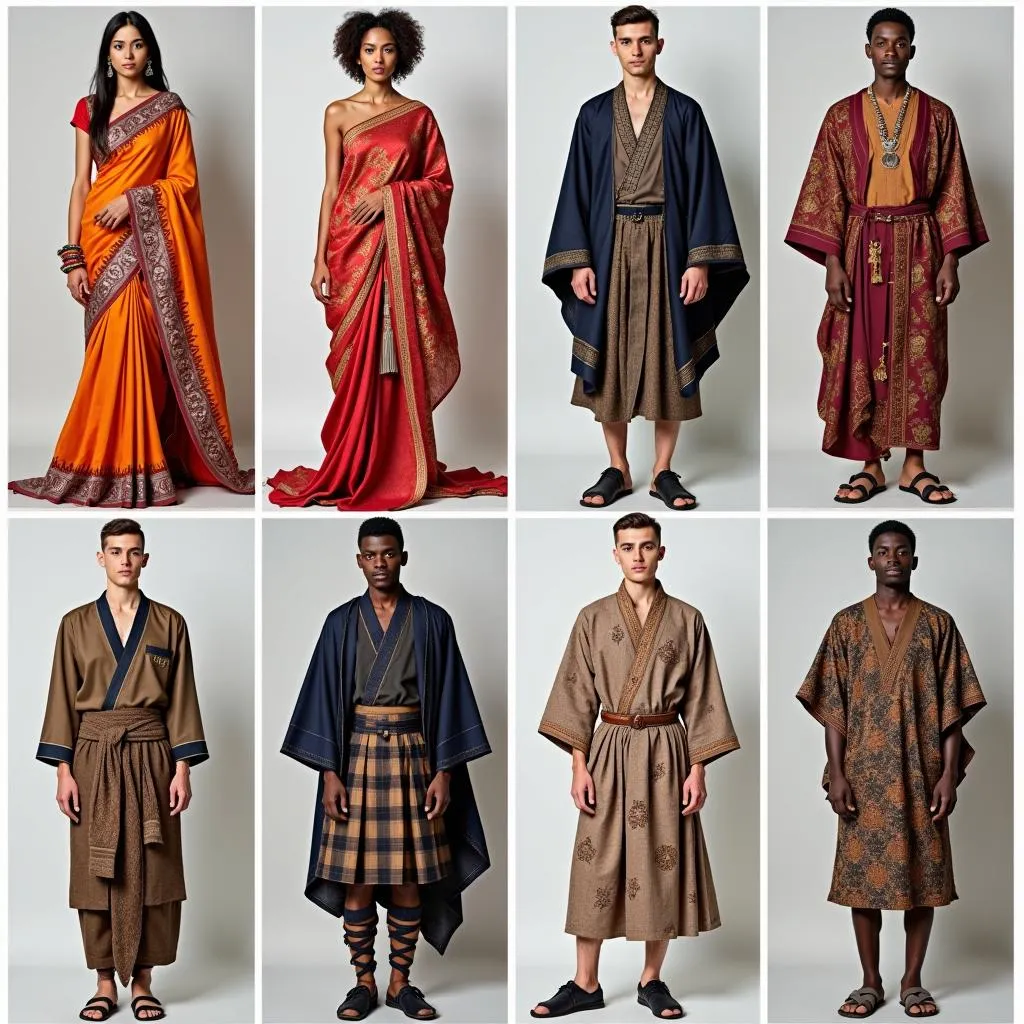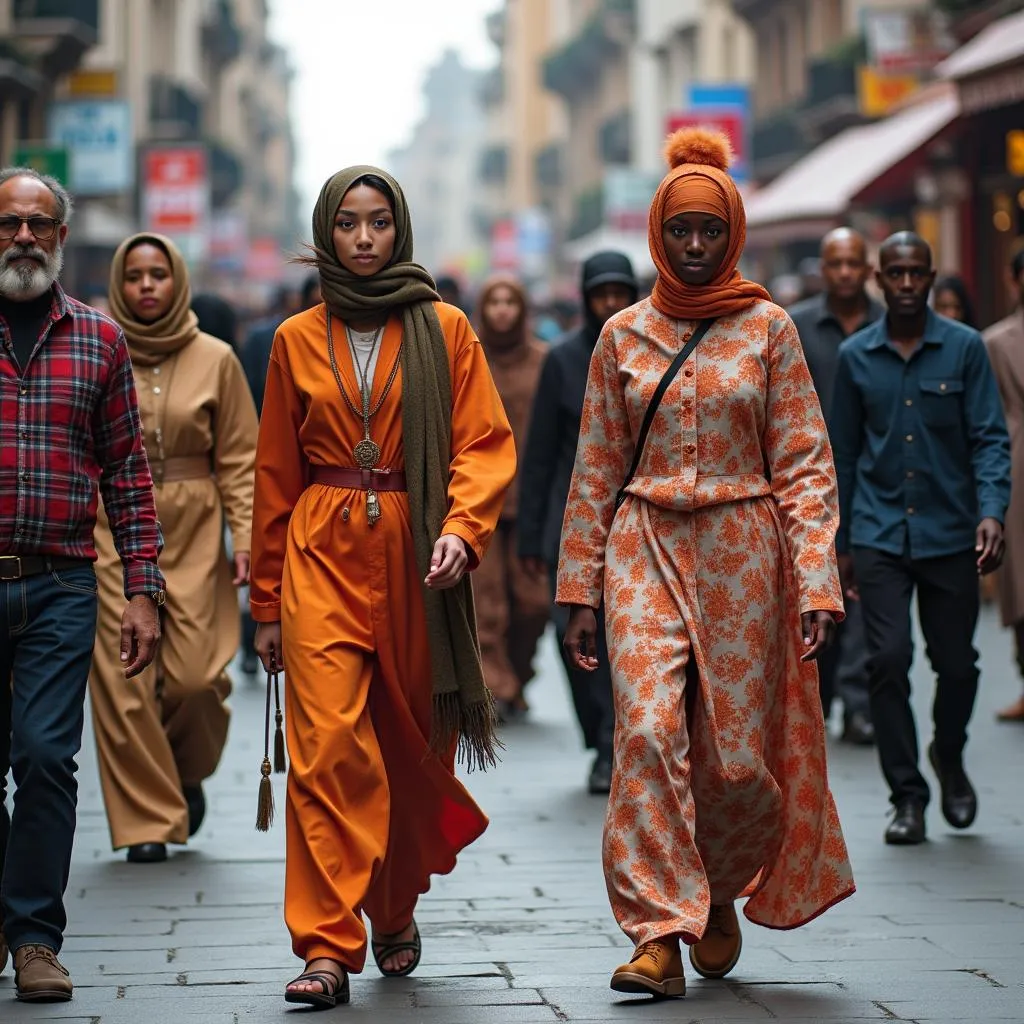The topic of how fashion trends affect cultural identities is a recurring theme in IELTS Writing Task 2 essays. Based on recent exam patterns and trends, this subject has appeared frequently and is likely to continue being a popular choice for future tests. Let’s explore this topic through a carefully selected question that closely resembles those seen in actual IELTS exams.
Some people think that the clothes we wear and the fashion trends we follow have a significant impact on our cultural identity. To what extent do you agree or disagree with this statement?
Analyzing the Question
This question asks for your opinion on the relationship between fashion and cultural identity. Key points to consider:
- The main topic is the impact of clothing and fashion trends on cultural identity.
- You need to express your level of agreement or disagreement.
- You should provide reasons and examples to support your position.
- Consider both sides of the argument before making your conclusion.
Sample Essay 1 (Band 8)
Fashion trends and cultural identity are intricately intertwined, and I strongly agree that the clothes we wear significantly impact our cultural identity. This essay will explore how fashion choices reflect and shape cultural norms, as well as the role of globalization in this dynamic relationship.
Firstly, clothing has long been a powerful symbol of cultural identity. Traditional garments, such as the Indian sari, Japanese kimono, or Scottish kilt, are immediately recognizable representations of their respective cultures. These clothes not only serve practical purposes but also carry deep cultural significance, often tied to historical, religious, or social traditions. By wearing these garments, individuals actively participate in preserving and expressing their cultural heritage.
Moreover, contemporary fashion trends can both reflect and influence cultural shifts. For instance, the rise of casual wear in Western countries mirrors changing social attitudes towards formality and individual expression. The popularity of jeans worldwide is not just a fashion statement but also represents the spread of American cultural influence. As how globalization affects local cultures, we see a blending of traditional and modern styles, creating new forms of cultural expression through clothing.
However, it is important to note that the relationship between fashion and cultural identity is not always straightforward. In an increasingly globalized world, fashion trends often transcend national and cultural boundaries. This can lead to a homogenization of styles, potentially diluting distinct cultural identities. Yet, it also fosters cross-cultural exchange and innovation, as designers draw inspiration from diverse sources to create unique fusions.
In conclusion, while the impact of clothing on cultural identity is significant, it is also evolving in our interconnected world. Fashion remains a powerful tool for cultural expression and preservation, but it also reflects the complex interplay between tradition and modernity in shaping our identities.
(Word count: 296)
 Traditional clothing representing cultural identity
Traditional clothing representing cultural identity
Sample Essay 2 (Band 6)
I agree that the clothes we wear and fashion trends have a big effect on our cultural identity. This essay will discuss why I think this is true.
Firstly, traditional clothes are very important for cultural identity. For example, in my country, we have special clothes for festivals and weddings. When people wear these clothes, they show they belong to our culture. This helps keep our traditions alive.
Also, modern fashion trends can change how we see our culture. Many young people now wear Western-style clothes like jeans and t-shirts. This shows how our culture is changing and becoming more global. Sometimes this means we lose some of our old traditions, but it also helps us connect with other cultures.
However, not everyone follows fashion trends. Some people choose to wear clothes that don’t match the latest styles. This can be a way to show they are different or that they don’t agree with popular culture.
The influence of global media on local traditions is also important. We see different styles from around the world on TV and the internet. This gives us new ideas about what to wear and can change our own style.
In conclusion, I think clothes and fashion trends do have a big impact on cultural identity. They can help us keep our traditions, but also show how our culture is changing in the modern world.
(Word count: 234)
Explanation of Band Scores
Band 8 Essay Analysis:
- Task Response: The essay fully addresses all parts of the task, presenting a clear position with well-developed ideas and relevant examples.
- Coherence and Cohesion: Ideas are logically organized with clear progression throughout. Paragraphs are well-linked, and cohesive devices are used effectively.
- Lexical Resource: A wide range of vocabulary is used accurately and appropriately, with good use of less common words and phrases.
- Grammatical Range and Accuracy: A variety of complex structures are used with a high degree of accuracy. Errors are rare and do not impede communication.
Band 6 Essay Analysis:
- Task Response: The essay addresses the task, though some ideas may be underdeveloped or repetitive.
- Coherence and Cohesion: There is a clear overall progression, but some paragraphs may lack focus. Cohesive devices are used, but not always accurately.
- Lexical Resource: An adequate range of vocabulary is used, with some attempts at less common words, though there may be some inaccuracies in word choice or spelling.
- Grammatical Range and Accuracy: A mix of simple and complex sentence forms is used, with some errors that do not impede communication.
 Global fashion trends illustrating cultural fusion
Global fashion trends illustrating cultural fusion
Key Vocabulary to Remember
- Intricately intertwined (adverb + adjective) – /ɪnˈtrɪkətli ɪntəˈtwaɪnd/ – closely connected in a complex way
- Cultural norms (noun phrase) – /ˈkʌltʃərəl nɔːmz/ – standard behaviors and beliefs of a particular group
- Garments (noun) – /ˈɡɑːmənts/ – items of clothing
- Contemporary (adjective) – /kənˈtempərəri/ – belonging to or occurring in the present
- Homogenization (noun) – /həˌmɒdʒənaɪˈzeɪʃən/ – the process of making things uniform or similar
- Cross-cultural exchange (noun phrase) – /krɒs ˈkʌltʃərəl ɪksˈtʃeɪndʒ/ – interaction and sharing between different cultures
- Diluting (verb) – /daɪˈluːtɪŋ/ – making something weaker in force, content, or value
- Transcend (verb) – /trænˈsend/ – go beyond the range or limits of something
Conclusion
The topic of fashion trends and cultural identity is a complex and relevant issue in today’s globalized world. As we’ve seen in the sample essays, this subject allows for discussion of tradition, modernity, globalization, and cultural exchange. To further practice your writing skills, consider exploring related topics such as:
- The role of traditional clothing in preserving cultural heritage
- The impact of fast fashion on local textile industries and cultural practices
- How social media influences global fashion trends and cultural identity
We encourage you to write your own essay on this topic and share it in the comments section below. This active practice will help you improve your writing skills and prepare for the IELTS Writing Task 2. Remember to analyze the question carefully, plan your response, and use a range of vocabulary and grammatical structures to express your ideas clearly and effectively.
The influence of pop culture on societal norms is closely related to fashion trends and their impact on cultural identity. As you prepare for your IELTS exam, consider how these interconnected topics reflect broader social changes and how globalization is reshaping cultural identities around the world.


